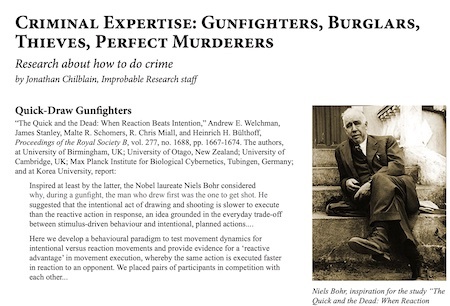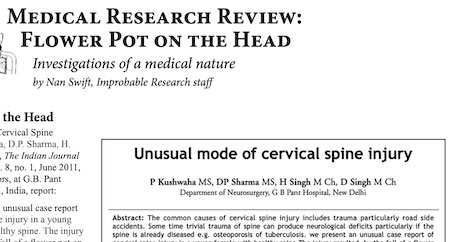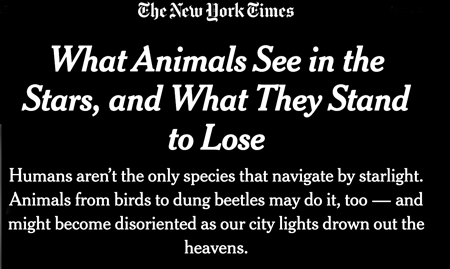Marc Abrahams's Blog, page 74
August 17, 2021
Some stuff about the stuffed frogs in Split

Froggyland, a museum in Split, Croatia, describes its treasures:
“The collection consists of 507 stuffed frogs of a common European frog species (lat. rana esculenta). The frogs have been stuffed in a very demanding way, using a taxidermy technique through the mouth, which is an extremely complex and time consuming process, so the exhibits are devoid of any external incisions. Comparing the Ferenc Mere’s collection with similar collections made by other authors, it is evident that Ferenc Mere was a master craftsman of taxidermy of small animals…. This collection is comprised of 21 exhibits which show thematically arranged frogs and depict various everyday life situations.”

August 16, 2021
De-humanizing Humanoid Robots [study]
Humanoid robots are often experienced as unnerving, a psychological phenomenon called the “uncanny valley.”
The Uncanny Valley is quite a problem for ‘humanoid’ robot designers – who currently struggle to make their robots 100% convincing. A newly proposed solution involves ‘dehumanizing’ ‘humanoid’ robots. By, for example, removing the robot’s face to expose bare electronic circuit boards. Or by completely changing the robot’s appearance so that no-one could mistake it for a human.
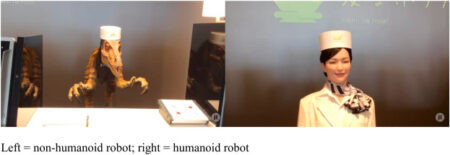
An international team, who publish their research in the journal Computers in Human Behavior, set up :
“ […] an experimental field study where hotel guests interacted with real humanoid robots in Japan”
Their experiments revealing that :
“[…] dehumanization reduces the uncanny valley without decreasing customers’ satisfaction.“
See : Reducing the uncanny valley by dehumanizing humanoid robots Reference : Computers in Human Behavior, Volume 125, December 2021, 106945.
Note: Although the paper is behind a $19.95 paywall, one of the authors, Professor Kurt Gray, from the University of North Carolina Chapel Hill, US, has kindly posted a photo from the research on social media (reproduced above) which shows a pair of robots used in the study.

August 12, 2021
A Look Back at Some Improbable Dramatic Readings
Nine years ago, the Berkman Center for Internet and Society, at Harvard Law School, hosted one of our Improbable Dramatic Readings events (which we sometimes call Dramatic Improbable Readings events), with Berkmanians and friends being the dramatic readers, and audience members asking impenetrating questions. Here’s video of that event.
The Berkman Center, whose name has since grown to become the Berkman Klein Center, also has a writeup of the event.
The dramatic readers, each reading dramatically from a research study that they had not seen until a few minutes before the event began, include most (but not all!) of the people on this list, and a few people who are not on this list:
Gus Rancatore (proprietor, Toscanini’s Ice Cream)Richard Baguley (technology reviewer)Naomi Stephen (literature scholar)Jeff Hermes (director, Digital Media Law project)Mary Carmichael (higher ed reporter, Boston Globe)Molly Sauter, Berkman Center FellowRyan Budish, Berkman Center Fellow and Director of HerdictJudith Donath, Berkman Center FellowKendra Albert, Berkman Center FellowAlicia Solow-Niederman, Berkman Center StaffMatthew Battles, Berkman Center FellowAdam Holland, Berkman Center StaffComing Event: New Dramatic Readings This Saturday!We will do a new Improbable Dramatic Readings session this Saturday night, August 14, 2021, at 8:00 pm (US eastern time) as part of Readercon. The session is open to all attendees of Readercon. (Readercon is happening entirely online this year, because of the pandemic.)

August 10, 2021
Improbable research about how to do crime
“Criminal Expertise: Gunfighters, Burglars, Thieves, Perfect Murderers” is a featured revue article in the special Haphazard issue (volume 27, number 3) of the magazine Annals of Improbable Research.
Read this article, free, on the web.
Then, if research about how to do crime inspires you, subscribe to the magazine, or buy individual back issues.

August 9, 2021
Honqi “Car Face” design implications [study]
Over the years, a number of scholars have reported on the implications of ‘Car Face’ design. For a recent example, see the work of Xueyuan Zhang, Liqing Huang and Mingzhu Li of the School of Art, Jiangsu University, Zhenjiang, China, who report, in E3S Web of Conferences 236, 02042 (2021) regarding Research on the Shape of Automobile Face Based on Cultural Translation
They take, as one of their examples, the Honqi H9 , about which, they say :
The design of the front face of Hongqi H9 refined the imagery of “Alpine waterfalls, Mainstay” and “Dreams Agitating, Flying with Wings” in the translation of artifacts, and designed the new red flag car logo, straight waterfall grille and U-shaped penetration Car lights; in the process of organizational translation, based on the design philosophy of “Noble, Extreme, Artistic Conception” and family design genes, fully deconstruct the aesthetic sense of form and use the traditional Chinese aesthetics of silver.
The grille design and the penetrating driving lights are harmoniously integrated into the front face shape. On the basis of the two, visual expression and artistic conception are used to make the front face of the car show the “modest gentleman” who is both internal and external, making people look at it at a glance. It will produce an indescribable sense of luxury and solemnity.

August 8, 2021
Podcast Episode #1078: “Are People Happier on Weekends?”
In Podcast Episode #1078, Marc Abrahams shows an unfamiliar research study to biologist Dany Adams. Dramatic readings and reactions ensue.
Remember, our Patreon donors, on most levels, get access to each podcast episode before it is made public.
Dany Adams encounters:
“Weekends, work, and well-being: Psychological need satisfactions and day of the week effects on mood, vitality, and physical symptoms,” Richard M. Ryan, Jessey H. Bernstein, and Kirk Warren Brown, Journal of Social and Clinical Psychology, vol. 29, no. 1 (2010): 95-122.
Seth Gliksman, Production Assistant
Available on Spotify, Apple Podcasts, Overcast, Google Podcasts, AntennaPod, BeyondPod and elsewhere!

August 5, 2021
Flowerpot on the Head, a Medical Investigation
“Medical Research Review: Flower Pot on the Head” is a featured revue article in the special Haphazard issue (volume 27, number 3) of the magazine Annals of Improbable Research.
Read this article, free, on the web.
Then, if a flowerpot on the head inspires you, subscribe to the magazine, or buy individual back issues.

August 3, 2021
Farewell Larry Sherman: A Life of Glee and Gourds
The man who studied children’s glee and who cherished gourds, winning an Ig Nobel Prize for the former activity, has died.
In this photo you see him (escorted by minordomo Stefanie Friedhoff) at the 2001 Ig Nobel Prize ceremony:
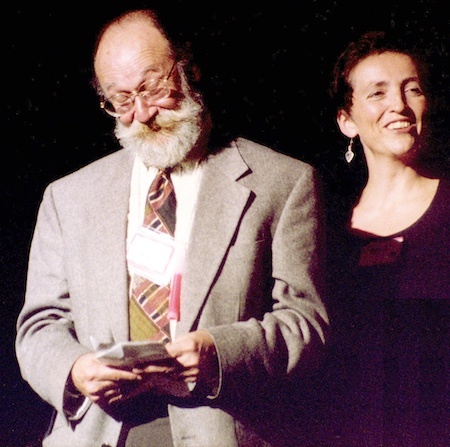
The 2001 Ig Nobel Prize for psychology was awarded to Lawrence W. Sherman, for his influential research report “An Ecological Study of Glee in Small Groups of Preschool Children.” (That study was published in the journal Child Development, vol. 46, no. 1, March 1975, pp. 53-61.)
Larry Sherman died a few weeks ago, as reported in an :
Larry was a professor of Educational Psychology at Miami University in Oxford, OH for 39 years before retiring in 2010 and relocating to Fort Collins, CO in 2013. He was a jazz trumpet player and co-director of the Oxford Gourd and Drum Ensemble: OGADE, that performed both percussive and tonal gourd instruments…
Larry was active in… the American Gourd Society. He loved swimming and competed regularly at the United States Master Swimming meets both in Ohio and Colorado. Often, he would tell friends he won, but then would laugh that he was the only person swimming in that age division. His last swim meet was in May 2021.

August 2, 2021
Beer mats make bad frisbees [study]
If you’ve spent any significant amount of time trying to use a beermat as a frisbee, you’ll know that they’re not very suitable. What you may not know, is the physics behind why they’re not.
A research team from the Helmholtz Institute of Radiation and Nuclear Physics and the Argelander Institute for Astronomy at the University of Bonn, Germany have performed a series of practical experiments, using their specially designed bespoke beermat shooting apparatus [pictured].
Their results, and the mathematical formulae derived from them, are published in the latest issue of the European Physical Journal Plus.
See : Ostmeyer, J., Schürmann, C. & Urbach, C. Beer mats make bad frisbees. Eur. Phys. J. Plus 136, 769 (2021).
Note: The online version has links to some beermat-launching videos, which, depending on your web browser, you may or may not be able to view – they’re saved as Microsoft .avi – a video format which will shortly be celebrating its 30th birthday.

July 29, 2021
Importance Sometimes Eclipses Amusement: Dung Beetles & the Milky Way
When people first encounter something surprising, it can seem laughable and thought-provoking. Later, if enough people come to decide the discovery is important, people then treat it with reverence and awe. The discovery has become too important, apparently, to describe with amusement. The public reaction has changed—but it’s the same discovery!
Here is , perhaps, a good example, about dung beetles.
The 2013 Ig Nobel Prize jointly in Biology and Astronomy was awarded to Marie Dacke, Emily Baird, Marcus Byrne, Clarke Scholtz, and Eric Warrant, for discovering that when dung beetles get lost, they can navigate their way home by looking at the Milky Way.
Ig Nobel Prizes honor achievements that make people LAUGH, then THINK.
The team came to that year’s Ig Nobel Prize Ceremony at Harvard University, where they and their discovery were greeted loudly with simultaneous amusement AND appreciation.
Now, nine years later, witness the stately, laughless appreciation of that discovery and follow-up discoveries. The New York Times reports respectfully, without amusement, on July 29, 2021:
Science: Laughter, then Sometimes Laughless Reverence
One moonless night a little more than a decade ago, Marie Dacke and Eric Warrant, animal vision experts from Lund University in Sweden, made a surprise discovery in South Africa.
The researchers had been watching nocturnal dung beetles, miniature Sisyphuses of the savanna, as they tumbled giant balls of dung. The beetles seemed to be able to roll remarkably straight, even though they had no clear landmarks to reference.
“We thought maybe they were using our cameras, maybe someone had lit a fire somewhere,” Dr. Dacke said. “We were really confused.” Then they realized the beetles were guided by the 100,000 light-years-long streak of the Milky Way.
We humans are famous for this sort of thing.
Science, as it is often taught and described, is a long list of discoveries that at first struck people as being amusing and thus trivial or wrong. Some of those discoveries later came to be seen as important and correct. After that moment (“Hey, this is important!”) each of those discoveries was treated with reverence and awe—but no longer with delighted amusement.
What’s Next?Ten new Ig Nobel Prize winners will be introduced at the 31st First Annual Ig Nobel Prize ceremony, on September 9, 2021.

Marc Abrahams's Blog
- Marc Abrahams's profile
- 14 followers



